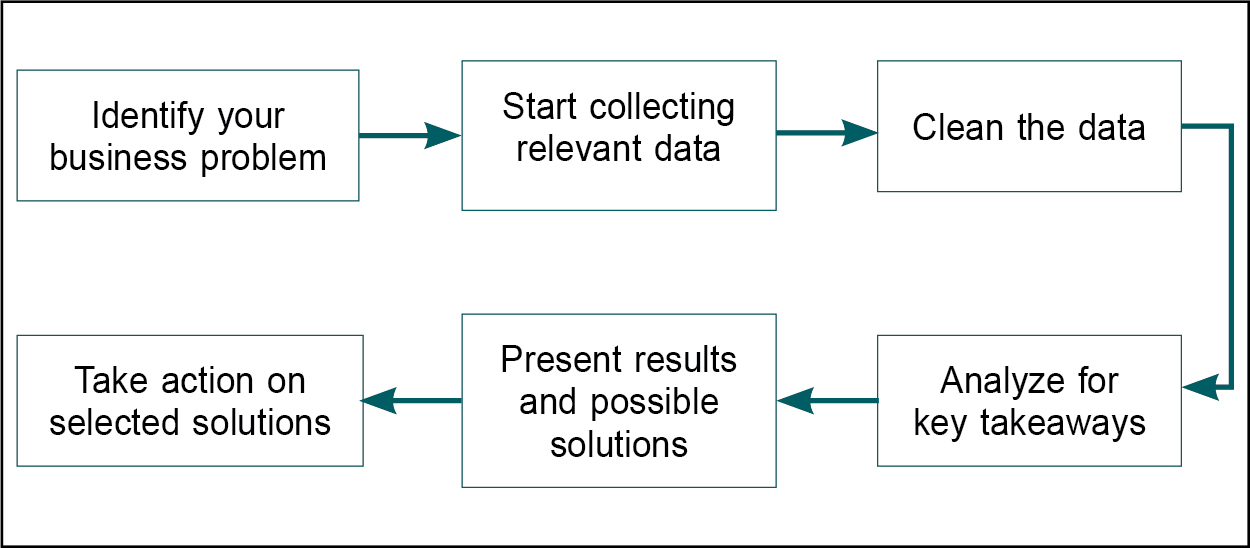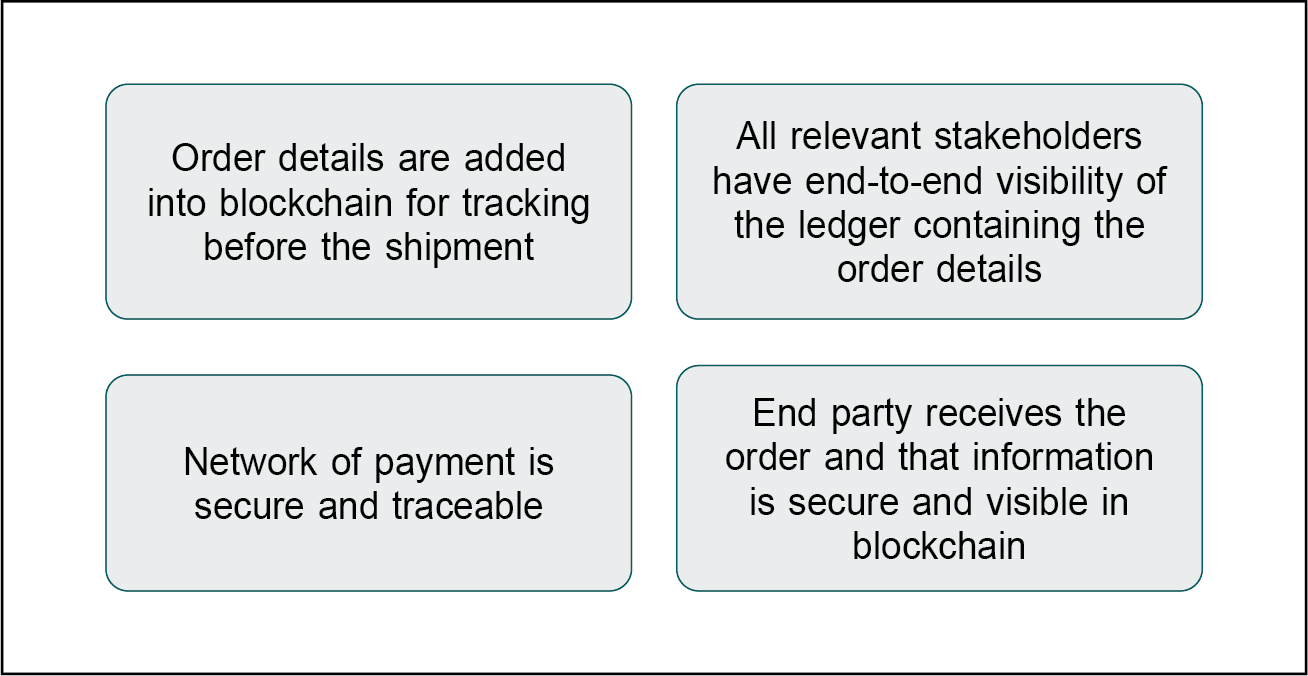https://doi.org/10.59793/ijcp.v34i5.677
Abstract
In recent years, there has been a growing focus on the next-generation of supply chain processes in the health care sector, with a great emphasis on the use of data analytics, automation, radio-frequency identification (RFID) and blockchain technology. Data analytics can be used to identify patterns and optimize decision-making in the operational process flow. Automation can be used to streamline processes, reduce errors and improve efficiency. RFID can be used to track the movement of products through all channels of distribution, providing real-time visibility and traceability. Blockchain can be used to create a secure and immutable record of transactions, providing transparency and trust throughout the supply chain. This article will discuss the adoption of these technologies and techniques, and how they have the potential to revolutionize the health care supply chain, making it more efficient, transparent and secure. It will describe the potential of its positive impact on patient care, by ensuring that patients have access to the right products at the right time, and by reducing the risk of counterfeit and contaminated products. Health care organizations need to invest in these technologies, develop newer business models and focus on transforming their operating processes in order to remain competitive in this rapidly changing landscape. It will also provide an overview of the opportunities associated with the adoption of these technologies. Alongside, it will also discuss the implications of these trends for health care organizations and distribution networks.
Keywords: Health care, supply chain, logistics, distribution, patient care, data analytics, optimization, transparency, RFID technology, digitization
Supply chain processes have always been an integral part of the health care industry, ensuring timely delivery of medications, medical devices and other essential supplies to health care facilities. Despite this critical role of supply chain management in health care, this industry faces several challenges. One of the most significant challenges are the old and redundant procedures and technology which lack transparency and visibility in everyday operational processing. Many health care organizations struggle to track the movement of products through their supply chain, which can lead to various challenges such as delays, stockouts and increased costs.1 The next-generation of processes in the supply chain industry have been designed to improve efficiency, reduce costs and enhance transparency within the supply chain industry in the health care sector. Now, with the globalization of such processes and the introduction of an advanced era of medical supply chain, processes such as data analytics and automation, the use of radio-frequency identification (RFID) technology, and implementation of blockchain technology, have become increasingly popular and are benefiting supply chains globally.
DATA ANALYTICS AND AUTOMATION
Data Analytics – Efficiency and Cost Optimization
One of the pioneer processes of this digitized era of global supply chain is the use of data analytics and automation (Fig. 1). It has become an increasingly important factor in trying to solve business problems, improve efficiency of other relevant procedures and optimize operational continuity. By collecting data efficiently, organizations can identify areas where they can streamline their operations and save time, money, effort of the many involved in the entire process flow.2 Effective data analytics can be used to identify patterns in demand which can help organizations to better forecast their needs and avoid stockouts and deliver available stock on time. Companies are also using data analytics to cut costs by identifying areas where non-value-added operations can be minimized, and then implement the necessary actions to standardize.

Figure 1. Data analysis process flow.
Data Analytics – Patient Care Solutions
In addition to improving efficiency, data analytics can also help to improve patient care. By analyzing relevant data, organizations can identify areas where they can improve the quality of care that they provide to their patients. For example, data analytics can be used to identify patients who are at risk for developing certain conditions and organizations can connect with their distribution networks to provide apt solutions for them. Additionally, by identifying these patients early, organizations can provide them with the care that they need to prevent these conditions from developing as well. Data analytics can also be used to improve the safety of care. Through detailed analyses, organizations can identify areas where they can reduce the risk of medical errors. For example, analyzing data which is used to identify patterns in medication errors. By identifying these patterns, organizations can develop interventions to prevent these errors from happening in the future.
Automation – Monitoring and Transparency
Automation is a complementary advancement to data analytics, and furthermore an important process in the medical supply chain industry. It can help to improve efficiency and reduce costs in the long run by eliminating the need for manual labor. In today’s era, automated inventory systems are making it possible for operation teams to track their supplies’ health, storage condition and delivery condition in real-time. Automation can also help to improve patient care by ensuring that quality control in the supplying of medical supplies, as automated medication systems can prevent patients from receiving any contaminated or harmful products.1 Today’s advancements support real-time patient monitoring – identifying patients who are at risk for developing certain conditions and alerting the concerned doctors to asses them accordingly with ample time. This not only benefits the patients and health care providers, but also distribution networks across the globe due to the transparency it brings forth. Health care providers and distribution networks will have access to the right information at the right time, which they would need to take right decisions about the safety and quality of their deliverables.
RFID TECHNOLOGY
Potential, Visibility and Management
Secondly, the use of RFID technology is another transformational process that has the potential to revolutionize the health care supply chain industry (Fig. 2). RFID tags can be attached to medical supplies, equipment and inventory allowing for real-time tracking and identification throughout the supply chain.3 This information can be used to significantly improve inventory management, reduce costs and improve patient safety. This technology can be used to track the location of medical supplies and equipment at all times, providing real-time visibility into inventory levels. This information can be used to prevent stockouts and forecast demand to ensure that supplies are always available when needed. By improving inventory management, RFID can help to reduce the amount of money spent on unnecessary inventory purchases. It can also help to reduce labor costs as it can automate many of the manual tasks involved in inventory management. This technology can also be used to help in identifying areas where waste and inefficiency can be reduced, along with driving cost reduction exercises.

Figure 2. RFID integration into the supply chain.
Patient Safety
In addition to improving inventory management and reducing costs, RFID technology can also improve patient safety. For example, multiple hospitals are now using RFID tags to track the movement of blood products throughout the hospital. This has helped to improve the efficiency of the blood supply chain and reduce the risk of blood transfusions being given to the wrong patient.3 The primary purpose of these tags is to track the movement of medications and other medical devices; therefore, they can prove to be extremely beneficial in helping to prevent medication errors and ensure that patients receive the correct treatment.
BLOCKCHAIN
Application
Blockchain technology is a distributed ledger technology that is slowly forming its ground in the world of medical logistics. It has the capability of resolving bottlenecks by providing a secure, transparent and immutable record of transactions, to improve visibility, traceability and efficiency in the health care supply chain. Counterfeiting is one of the biggest challenges facing the health care supply chain; counterfeit drugs and medical devices can pose a serious risk to patient safety, and they can also be difficult to detect. Blockchain can help to combat counterfeiting by providing a secure and tamper-proof way to track the source of medical products and mitigate that risk.
Traceability and Implementation
This newly adapted technology can also help to improve traceability in the health care supply chain. This is important for ensuring that patients receive the correct medication and that medical devices are used safely and effectively. Blockchain can track the movement of products throughout the supply chain, from the manufacturer till the end patient.4 This information can be used to identify potential problems, such as temperature anomalies or medication errors. Additionally, automating many of the manual processes involved in supply chain management, blockchain can save time, money and effort. This can free up other resources that can be used to improve patient care. The overall usage of blockchain technology is increasing in the world of supply chain as it has the potential to make a significant global impact. By providing a secure, transparent and efficient way to track the movement of medical products, blockchain can help to improve patient safety, reduce costs and improve the quality of care (Fig. 3).

Figure 3. Blockchain transaction.
CONCLUSION
In conclusion, the various transformational processes of supply chain in the health care industry are expected to have a very significant impact in the coming future. By leveraging new technologies and digitizing their processes, health care organizations and distribution networks can improve the transparency and visibility of their supply chains, reduce costs and improve the delivery to their patients.1 With such advancements happening so rapidly, as a result, more companies would want to adapt these changes in order to remain competitive and sustain their business in this ever-changing landscape.
REFERENCES
- Alicke K, Rachor J, Seyfert A. Supply Chain 4.0 – the Next-Generation Digital Supply Chain. McKinsey & Company. Published Oct 27, 2016. Available from: https://www.mckinsey.com/capabilities/operations/our-insights/supply-chain-40--the-next-generation-digital-supply-chain
- Bhatia A, Mittal P. Big data driven healthcare supply chain: understanding potentials and capabilities. In: Proceedings of International Conference on Advancements in Computing & Management (ICACM-2019). 2019. pp. 879-87.
- Coustasse A, Tomblin S, Slack C. Impact of radio-frequency identification (RFID) technologies on the hospital supply chain: a literature review. Perspect Health Inf Manag. 2013;10(Fall):1d.
- Dutta P, Choi TM, Somani S, Butala R. Blockchain technology in supply chain operations: applications, challenges and research opportunities. Transportation Research Part E. 2020;142:102067.